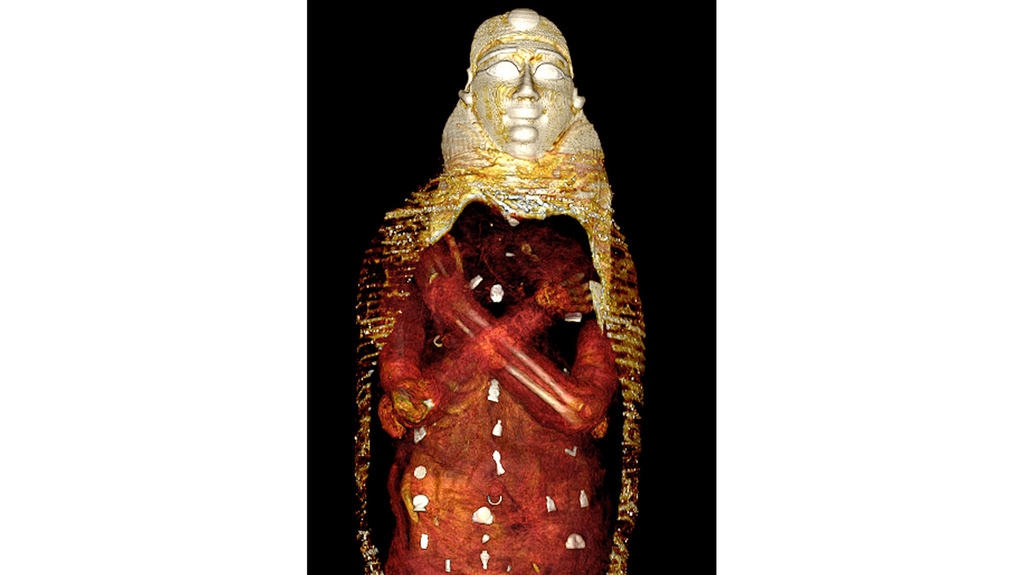Cairo, Egypt—A team of scientists took digital scans of an Egyptian mummy, revealing a treasure trove of protective amulets made of gold, clay, and other materials.
The wrapped mummy was buried around 2,300 years ago in the late Ptolemaic era in a southern Egyptian cemetery and has been stored, undisturbed, in the basement of the Egyptian Museum in Cairo since 1916, according to a study published last week in Frontiers in Medicine.
“In the past, mummies were unwrapped and subjected to invasive dissection for research and entertainment. Finding an ideal compromise between investigating a mummy and not destroying it encouraged the use of less invasive methods,” said the study.
The team used Computed Tomography, or a CT scan, combined with 3D printing technology to get a better look at the mummy and its jewels.
The study was approved by the Egyptian Ministry of Tourism and Antiquities.
The mummy is thought to be a teenage boy, between 14 and 15 years old. The cause of death could not be determined and museum records gave no additional information about his identity, though the presence of gold amulets signifies a high socioeconomic status level, said researchers.

His body was covered in a brown wrapping with a gilded head mask on top. The mask’s eyes and eyebrows are inlaid with stones while the eye pupils are made of black obsidian.
Inside the mummy and between the wrappings, the scientists found 49 amulets of 21 different shapes, including a scarab and the Eye of Horus.
The scarab represents the god Kheper, who was said to move the sun across the sky. A scarab amulet was thought to hold the power of resurrection.
The CT images found seven scarab amulets, six on his head and one in his torso. The one in his chest is likely a gold heart-scarab, which is a large amulet inscribed with text from The Book of the Dead, an ancient Egyptian religious text.
A right-angle symbol, used by architects as a leveler, was also found in the torso, thought to bring balance to the deceased.
The Eye of Horus, also called an udjat, represented the god Horus and was meant to provide healing and regeneration. It was popular among the living and the dead in ancient Egypt.
The bottle amulet represented the situla, a metal bucket used to carry holy water.
The djed amulet, which looks like a pillar, symbolized the backbone of the god Osiris and was meant to ensure the dead’s revival.
The tyt amulet, also known as the god Isis’ knot, provided her protection. The double-plume amulet symbolized two lives, spiritual and material.
Researchers also discovered a gold amulet inside his mouth, placed there so he could speak in the afterlife.
“The embalmers placed amulets to protect and provide vitality for the body for the afterlife,” said the researchers.
Amulets have also been found inside the mummies of kings, like Amenhotep I, Seti I, Ramesses II, and Ramesses III.
Article written by:



